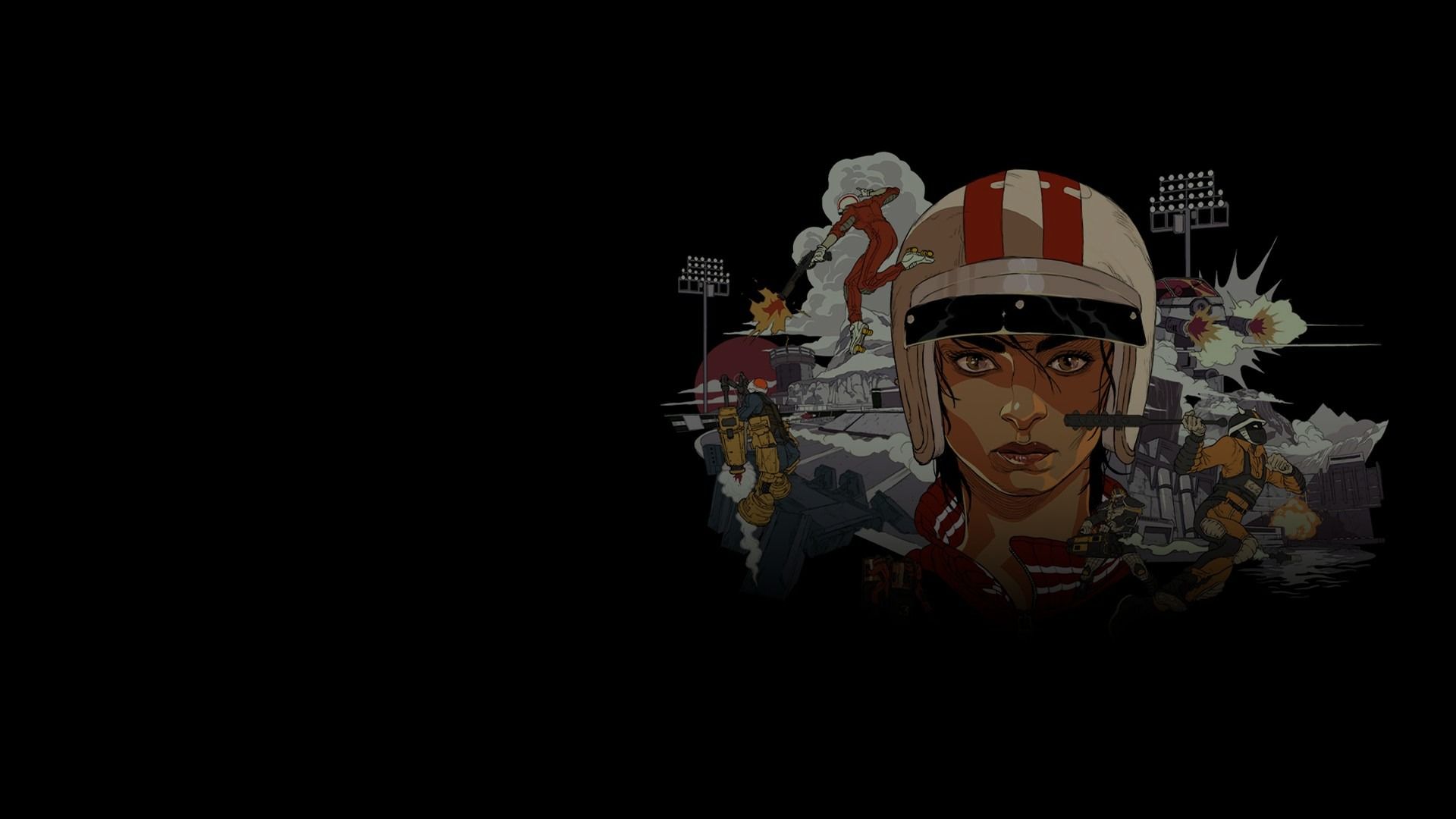
시장 도달 범위를 두 배로 늘리는 것은 특히 기회 비용이 낮다면 모든 스튜디오에게 좋은 소식일 것입니다. PC 게임을 온라인으로 배포하는 스튜디오의 경우, 최소한 비슷한 규모의 콘솔 시장으로 확장하는 것은 쉬운 일이 아닙니다. 유니티는 에디터에서 멀티플랫폼 빌드를 WYSIWYG로 제어할 수 있어 콘솔 개발이 용이하지만, 크리에이티브 스튜디오의 아트와 게임플레이가 모든 플랫폼에서 빛을 발하려면 여전히 고유한 방식을 조정해야 합니다.
고도로 맞춤화된 인하우스 렌더러로 여러 콘솔 플랫폼에 게임 출시하기
PC, PlayStation® 4, PlayStation® 5(초기 출시)
23
원격, 영국

Roll7(일명 롤링미디어)은 2008년에 Unity 2.0으로 최초의 브라우저 기반 게임 중 하나를 제작했습니다. 몇 년 동안 게임 개발을 배우고 다양한 엔진을 실험한 끝에 강력한 멀티플랫폼 기능, 게임 오브젝트 컴포넌트 아키텍처, 업계에서 널리 수용되는 개발 플랫폼이 필요하다는 것을 정확히 이해하게 되었습니다. 이를 바탕으로 인기 스케이트보드 게임인 올리올리월드와 최신 스케이터 슈팅 게임인 롤러드롬에 유니티를 선택했습니다. 수석 프로그래머인 앤드류 프레이는 "저희는 이 프로그램을 좋아합니다."라고 말합니다.

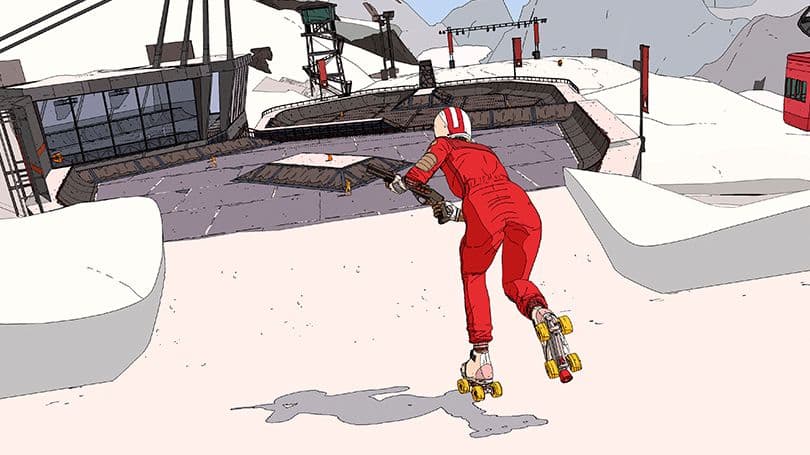
Roll7의 창립자인 사이먼 베넷, 톰 헤가티, 존 리빈스는 교육용 게임과 멀티미디어 콘텐츠를 계약 제작하면서 자체 IP를 출시하기 위한 자금을 모았습니다. 2012년에 iOS 게임을 출시하고 PC와 콘솔용 프로토타입을 다수 개발하기 시작했습니다.
스케이트보드 게임 프로토타입을 본 소니는 Roll7에게 PlayStation® Vita용 버전을 만들 것을 권유했습니다. 롤7은 2014년 올리올리를 출시해 호평을 받았고, 2015년에는 BAFTA 최우수 스포츠 게임상을 수상했습니다. 곧이어 속편이 출시되었고, 2022년 초에는 프랜차이즈의 세 번째 멀티플랫폼 타이틀인 올리올리 월드(OlliOlli World)가 출시되었습니다.

올리올리 이후, 스튜디오는 완전히 원격으로 게임 개발을 시도했습니다. 롤7은 원격 근무 모델이 "너무 즐겁다"고 판단하여 오프라인 사무실을 폐쇄하기로 결정했습니다.
프레이는 "롤7은 원격 개발이 가능할 뿐만 아니라 많은 스튜디오가 요구하고 많은 개발자가 견디기 힘든 크런치 환경 없이도 원격 개발이 가능하다는 것을 증명했습니다."라고 말합니다. 팀은 일과 삶의 균형을 유지하는 것을 매우 중요하게 생각하며 출시일이 임박하더라도 초과 근무를 피합니다. "콘솔 제출 빌드를 만들기 전 마지막 주에도 사람들이 오후 5시 30분에 로그오프할 것으로 예상합니다."
다양성을 존중하고 옹호하는 것은 Roll7 문화의 핵심이기도 합니다. 이러한 가치는 게임의 디자인, 테마, 캐릭터뿐만 아니라 팀 선정에도 반영됩니다. 또한 최대한 많은 사람이 게임을 마음껏 즐길 수 있도록 게임의 접근성을 개선하기 위해 지속적으로 노력하고 있습니다.

롤러드롬의아트 스타일은 헤비메탈을 연상시키는 잔인한 스타일과 윤곽선과 단색을 사용하여 사이키델릭 판타지와 초현실주의가 공상과학적으로 혼합된 거친 스타일을 선보입니다. 상당한 양의 에지 감지 및 라인 렌더링이 필요한 스튜디오의 독특한 일러스트레이션 그래픽을 구현하기 위해 Roll7 기술 아티스트는 Unity의 확장성을 활용하여 자체 렌더러를 구축했습니다.
"노컴플라이 셰이더를 사용하면 더 엉뚱하고 만화 같은 요소를 구현할 수 있습니다. 그리고 만화적인 느낌을 살리려면 그에 걸맞은 피직스가 필요합니다."라고 테크 아티스트 알리나 소머는 말합니다. 몇 개의 폴리와 작은 그라데이션 텍스처만으로도 복잡하고 다채로운 장면을 연출할 수 있으며, 롤7의 경우 차세대 플랫폼에서 4K 120fps 성능을 달성하는 데 필수적인 기술입니다.
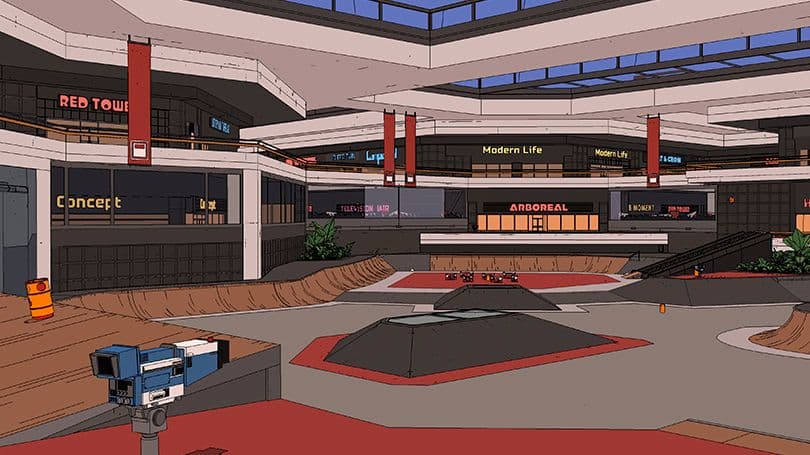
PlayStation 빌드를 생성할 때 결과물인 롤러드롬 실행 파일은 빠르고 쉽게 로드되었습니다. "그냥 효과가 있었어요."라고 프레이는 말합니다.
하지만 커스텀 렌더러로 만든 게임플레이를 접했을 때 회색 화면을 보게 되었고, 멀티플랫폼 포팅에 대한 중요한 교훈을 얻게 되었습니다. 소머는 "Unity는 사용하기 쉬워서 실제로 얼마나 많은 디테일을 처리하는지 잊어버릴 때가 있습니다."라고 말합니다.
예를 들어 노컴플라이의 일부 커스텀 렌더 타깃은 지원되지 않았고, 렌더 타깃과 렌더 텍스처 버퍼가 적절하게 매핑되지 않은 경우도 있었습니다. "다양한 플랫폼으로 직접 배송을 진행하다 보면 비교적 쉽게 해결할 수 있는 작은 문제들이 많이 발생합니다. 하지만 작업의 양은 늘어납니다."라고 Sommer는 덧붙입니다. 커스텀 렌더러를 구성하는 과정에서 발생한 복잡한 문제를 해결했을 뿐만 아니라, "유니티 덕분에 멀티플랫폼 빌드 파이프라인을 매우 쉽게 구축할 수 있었습니다."라고 그녀는 말합니다.

멀티플랫폼 빌드를 빠르게 생성하는 것 외에도 롤7 개발자에게는 여러 가지 Unity 기능이 눈에 띄었습니다. 서머스는 누락된 가장자리를 발견하면 프레임 디버거 창을 열어 여러 렌더 대상과 텍스처의 드로 콜을 확인할 수 있었습니다. "프레임 디버거는 이 프로젝트에서 제 가장 친한 친구였습니다."라고 그녀는 말합니다. "제가 가장 좋아하는 기능입니다!"
스마트 문자열 현지화 기능을 통해 동적 문자열을 사용하여 데이터 기반 템플릿을 생성할 수 있습니다. 이를 통해 적절한 복수화, 성별 활용, 목록 및 조건부 언어 논리를 확보할 수 있었으며, 이는 롤러드롬 로컬라이제이션에 큰 도움이 되었습니다. 또한 사용자 지정 코드를 작성하지 않고도 스마트 문자열을 사용하여 이름을 추출하여 UI 개발에 사용했으며, 향후 프로젝트에서 데이터 바인딩을 위해 더 일찍 통합할 계획입니다.
롤러드롬은 미묘한 차이가 있는 다양한 전환이 많아서 수동으로 테스트하는 것이 어려웠습니다. Roll7은횡단과 같이 가장 까다로운 영역에 대해 다양한 UTF( Unity 테스트 프레임워크 ) 테스트 모드를 사용했습니다. 프레이는 "결국 피직스와 레벨을 변경하는 등 막판 수정 작업을 자신 있게 할 수 있는 시점에 도달했습니다. 프로젝트가 끝날 무렵에는 45분 이내에 모든 테스트를 실행할 수 있었습니다."
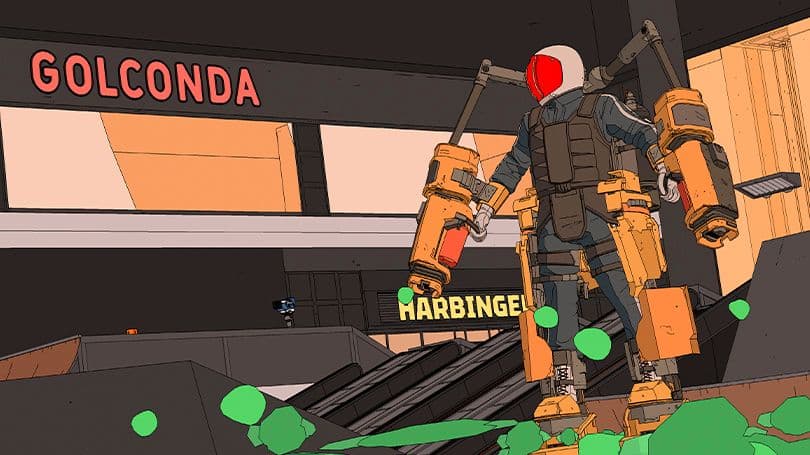
프레이는 "일주일에 걸친 프로젝트 컨설팅을 통해 큰 성능 향상을 이끌어낸 것부터 특정 문제에 대한 도메인 전문가와의 심층적인 기술 토론, 게임의 원활한 실행을 위한 유니티의 핵심 아키텍처에 대한 심층 분석까지, 유니티의 통합 성공 서비스를 통해 롤러드롬을 개발하는 데 많은 도움을 받을 수 있었습니다."라고 말합니다. Roll7에게 ISS는 "언제든 연락할 수 있는 강력한 계약자"와 같은 존재였습니다.
또한 롤7은 래그돌 피직스를 위한 퍼펫마스터, 복잡한 물리 레벨에서 유동적이고 반응이 빠른 움직임을 위한 키네마틱 캐릭터 컨트롤러 등 다양한 Unity 에셋 스토어 리소스를 사용했습니다. 길고 급격한 커브가 있는 롤러드롬 벨 로드롬과 잔인하고 직선적인 산 정상 스키 롯지를 생성하기 위해 팀은 커비 스플라인의 도움을 받아 여러 레벨 디자인 툴을 만들었습니다. 이 팀은 또한 Unity 프로빌더를 사용하여 레벨을 블록으로 만든 다음 메시로 변환하고 요소 주변에 디오라마와 배경을 빌드했습니다.
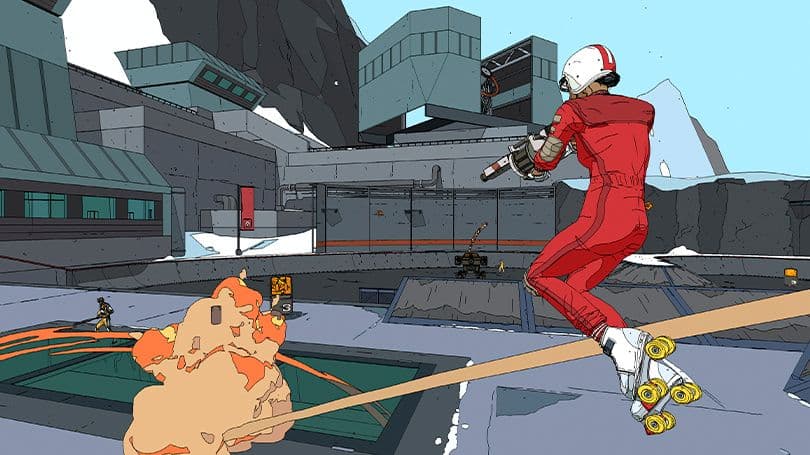
멀티플랫폼 게임 출시에 강한 의지를 가지고 있는 Roll7은 Unity 에디터에서 데스크톱과 콘솔에 모두 적용될 수 있다는 자신감을 가지고 있습니다. 또한 더 큰 시장에 진출하기 위해 저수준 엔진 코더 팀을 고용할 필요가 없어 리소스를 절약할 수 있었고, 프레임 디버거와 같은 기능을 통해 이상한 호환성 문제가 발생해도 빠르게 해결할 수 있었습니다. 프레이는 "소규모 스튜디오에서 Unity를 사용하는 것은 개발자 팀을 하나 더 확보하는 것과 같습니다!"라고 말합니다.

더 많은 잠재 고객에게 도달하고 미래를 대비할 수 있다는 자신감을 가지세요. 한 번 콘텐츠를 제작하면 20개 이상의 플랫폼에 출시하여 다양한 형식의 플레이어를 사로잡을 수 있습니다.